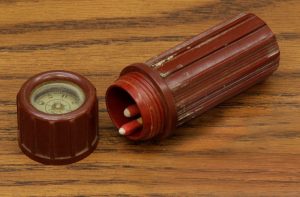The creation of the matches and their history
The rationale for making matches dates back to ancient times, when our ancestors grinded two pieces of wood to produce fire. The first wood, which they kept motionless, was called “στορεύς” or ” εσχάρα” and the second wood, which was rubbed on the first, was called “τρύπανον”.
After antiquity, the next station for making matches is noted in China shortly before 580 A.D., where they used a type of match that was highly flammable and dangerous.

It is believed that the technical ability to create fire separates humans from other animals. In primitive times man created fire by rubbing stones and wood. The creation of fire contributed to the survival of the human species, but also to its dominance in the animal kingdom. Absolutely explainable and justifiable, then, is why fire was worshipped as sacred.
However, many thousands of years have passed for man to be able to create fire easily and at any time.
The match is a consumable item that lights fire at will, under controlled conditions. It usually consists of a small stick (or hard cardboard) one end of which is covered with some material· the head of the match usually contains the element phosphorus, as wikipedia states. The head will light up from the heat caused by friction to a suitable surface.
Friction matches
 The first matches had various problems: the flame was not constant and the initial reaction was quite violent· in addition, the smell of the match was unpleasant. Despite these problems, the new matches have contributed significantly to the increase of the number of smokers.
The first matches had various problems: the flame was not constant and the initial reaction was quite violent· in addition, the smell of the match was unpleasant. Despite these problems, the new matches have contributed significantly to the increase of the number of smokers.
In 1831 the French Charles Chauriat added white phosphorus to remove the odor. These new matches had to be stored in airtight boxes, but they were popular.
Unfortunately, those involved in their construction were affected by serious bone diseases, and each pack contained enough white phosphorus to kill a human. When the dangers of these matches became known, a great campaign was launched to ban them.
Silent matches
The silent match was made in 1836 by the Hungarian Janos Irini, who was a chemistry student. In 1836, an unsuccessful experiment by his professor, Meissner, gave Irini the idea of replacing potassium chloride with lead dioxide on the match head.
Irini invented the silent safety match and sold the patent to the match maker Istvan Romer.
Romer, a wealthy Hungarian pharmacist living in Vienna, bought the invention and production rights from Irini, a poor student, for 60 forints. The production of matches started for good.
Istvan Romer became rich from Irini’s invention, while the inventor himself died poor and abandoned.
Safety matches
In 1844, the safety match was made by the Swede Gustaf Erik Pasch, which in 1854 was improved by John Edward Lundstram, who together with his brother set up a factory in Jonkoping, Sweden, where there is now a match museum.
 “The match museum in Jönköping, Sweden, exhibits many matchboxes and old machines used in the 1900s and automatic machines used in the mid-1900s by the match factory”.
“The match museum in Jönköping, Sweden, exhibits many matchboxes and old machines used in the 1900s and automatic machines used in the mid-1900s by the match factory”.
Their safety lies in the separation of the components which can be burned, between the match head and a special friction surface, and in the replacement of white phosphorus from red phosphorus. During friction the heat converts part of the red phosphorus into white, which ignites and causes the head to burn.
For many years, the Swedes had a virtually global monopoly on matchmaking, with industry mainly in Jönköping.
They sold the French patent for safety matches to Coigent père & Fils in Lyon, but the Coigent challenged the payment in a French court, arguing that the invention was already known in Vienna before the Lundstram brothers patented it.
The British matchmakers Bryant and May visited Jönköping in 1858 in an attempt to import supplies of safety matches, but they failed.
In 1862 they opened their own factory and bought the rights for the British safety matches patent from Lundstram brothers.
Windproof matches
 Before 1950, windproof matches began to circulate widely.
Before 1950, windproof matches began to circulate widely.
Typical example of a windproof (storm) match in Italy.
Waterproof matches
Matches in a waterproof case, windproof, whose box also has a compass.
It was built for the needs of the army in World War II.
Now there are waterproof and at the same time windproof matches that are easy to light, wind resistant, and when lit they stay lit for a long time even after immersion in water!
